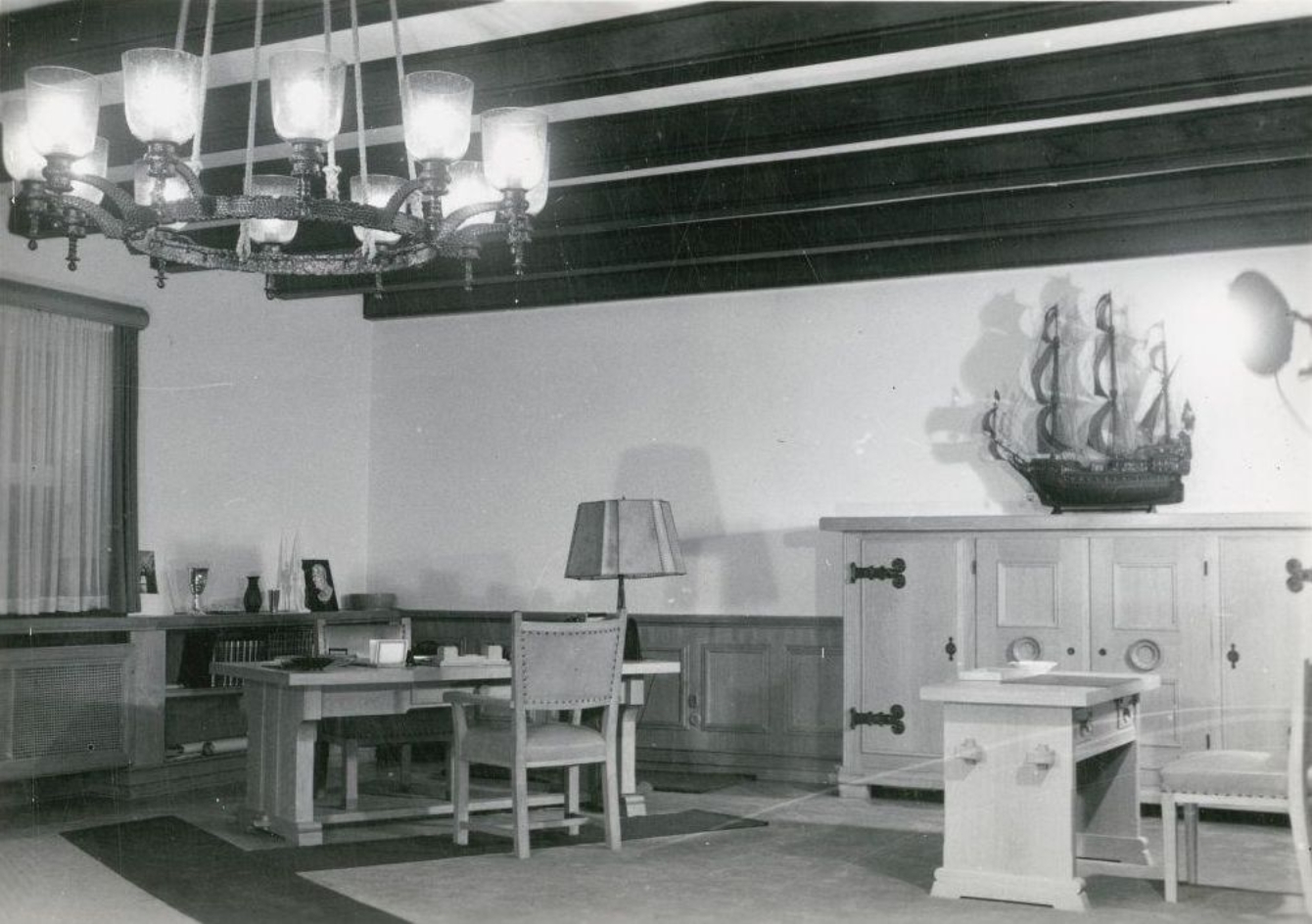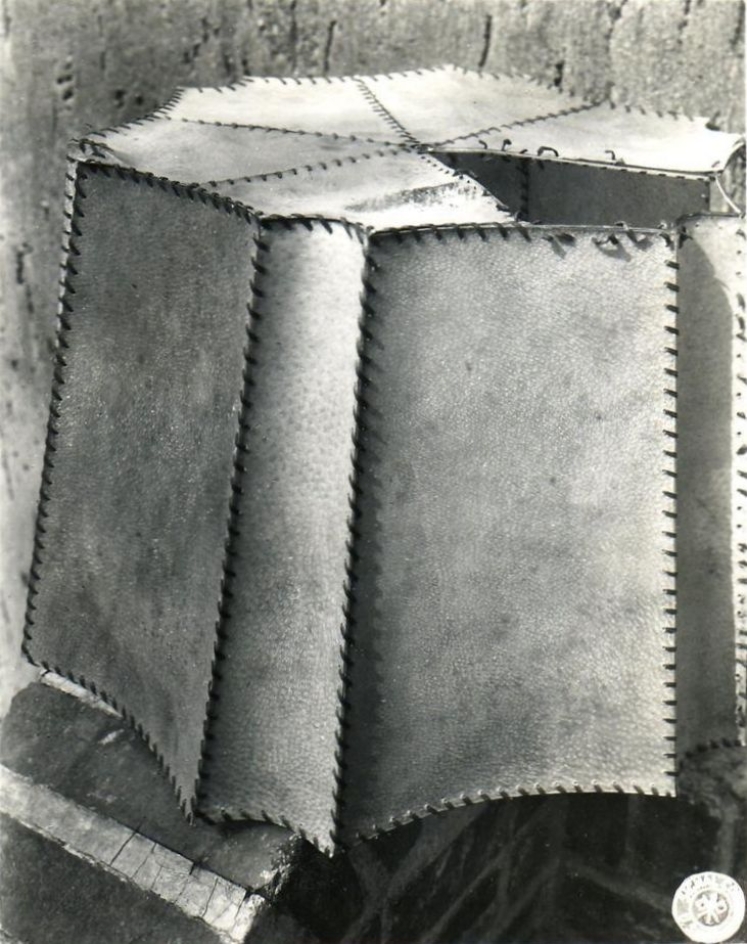Colonel William E. Williams, head of the 120th Evacuation Hospital, who was on medical duty with his unit in Buchenwald at the time, gave a member of parliament a piece from the upper section of the shade of the desk lamp that had already been displayed on the table with pathological specimens on 16 April. The same lampshade can be recognised in a photo album, which the first camp commandant Karl Otto Koch had made in 1943, on his desk in the camp commandant's office.
The lampshade, which was also intended as evidence, was literally plundered within days. In a photo from 24 April 1945, only the frame of the lampshade remains.
The piece of the lampshade was later found in the parliamentarian's family estate. In the course of Dr. Myfanwy Lloyd's research, the family expressed the wish to hand over the object to the Buchenwald Memorial. The handover took place on 11 April 2023.
An expert report on the property was commissioned by the Buchenwald Memorial on 19 February 2024. The result is still pending.

©Besancon Museum

©Arolsen Archives
©Buchenwald Memorial

